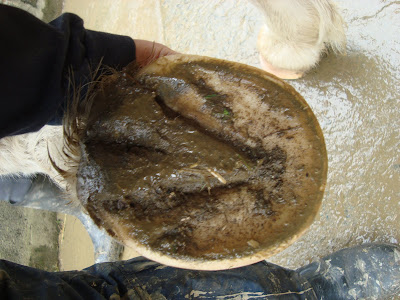
Charlie is a very open horse - you can see his moods in his expression very easily, and he is also a great communicator, both with people and with other horses. When we have clinics here, he will be the one who comes over and quietly "works the crowd", and he has a range of endearing mannerisms which nearly always work for getting him attention :-)
His purpose in life, though, is hunting - at least I am fairly sure that's his view. Someone asked me once why I was so convinced that he loved hunting - I think they believed I was just being anthropomorphic, or perhaps that he was getting excited but not necessarily enjoying himself out hunting. However, I reckon his behaviour makes it pretty clear that he does actually love it.
When he realises its a hunting morning, he starts to weave in his box rather than eat his breakfast (obviously I try to make mornings the same so as not to give the game away, but somehow he usually twigs before anything obvious - like hitching up trailers - has happened). That could be a sign of stress, but as soon as you get him out and start plaiting him up he immediately relaxes, I think in relief that he is definitely going and that he isn't being left at home :-)
The other giveaway is that he loves going in the trailer - not in itself a particularly rewarding experience, you would think, on steep, twisty Exmoor roads, but he is nearly always going hunting when he is travelled, and so once he sees the trailer ramp down, he storms up it, sometimes faster than you can get the partitions open for him.









































